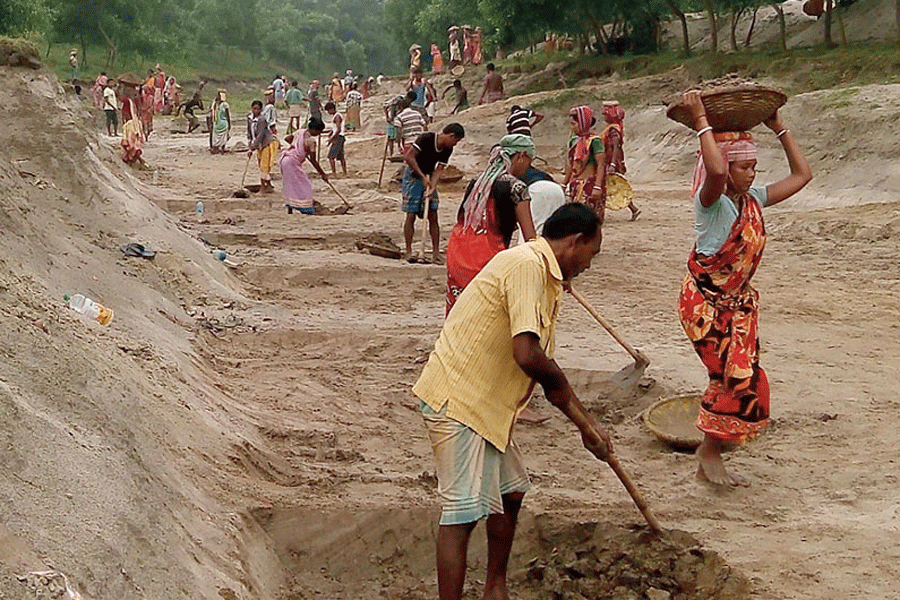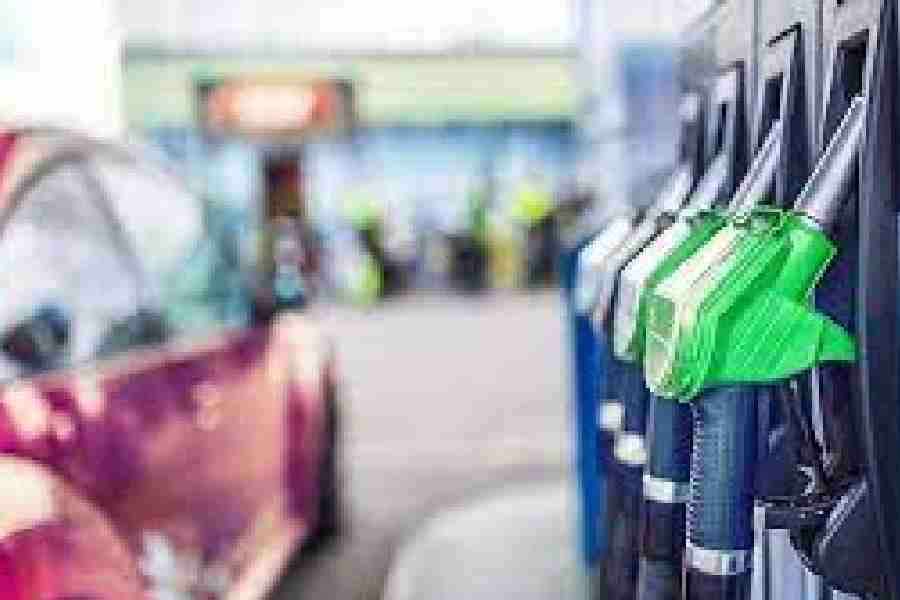 |
 |
| A frothy Subernarekha flows under the Namkum bridge in Ranchi on Monday and (above) the clearer waters of the river a few months ago. Picture by Prashant Mitra |
It may look like the surf’s up in Subernarekha. But environmentalists are anything but enchanted by the extraordinary appearance of the river that has earned its charming name from erstwhile gold deposits near its origin in Piska, Ranchi.
Gallons of foam and froth have layered the waters, which have also turned inky black from swampy green, over the past fortnight, prompting curious onlookers to throng a bridge near Namkum railway crossing from where the river almost resembles a giant soap basin.
However, no one seems to know for sure why the river has changed colours or what has caused it to work up the lather. While foam in flowing water can be either natural or the result of chemical release, the black colour does indicate effluent content.
“There may be more than one reason behind Subernarekha’s new look, but chemical release is one possibility that call for a probed. The suds may be indicative of an increased level of pollutants in the waters. A laboratory test will confirm it,” said M.K. Jamuar, a professor of zoology at Ranchi University and an active member of Yugantar Bharati, an NGO fighting against river pollution in Jharkhand.
The crusaders collected river samples from near Namkum bridge on Tuesday. “We have sent the water for tests to our laboratory in Sidrol (near Namkum),” confirmed Sarayu Roy, BJP leader and head of Yugantar Bharti who spearheaded the Damodar Bachao Andolan.
He said the results would be known in two-three days.
Surprisingly, the Jharkhand State Pollution Control Board (JSPCB) seemed grossly unaware of everything. Member-secretary S.K. Sinha said they had no information on the froth carpet on Subernarekha surface.
“Normally, a light lather is noticed on the river surface near the Namkum railway crossing. But we do not know anything about foam or black water. The matter will be looked into soon,” he hastily added.
Prodded on what might have caused the foam, Sinha blamed domestic waste.
Several small rivulets and nullahs passing through Harmu and Kokar join Subernarekha at different points, forming its network of tributaries in the state capital. These rivulets like Raru, Kanchi, Karru and Karakari also serve as a conduit of domestic wastes. The Getalsud reservoir, which is located some 40km east of the capital city, is fed by Subernarekha.
Noted environmentalist Hem Srivastava supported the waste theory.
“Pollutants in water often form an alkaline solution, which causes suds. The black colour is because the foam does not allow the sun’s rays to penetrate beyond the water surface,” he explained. “The pollutants can have come from household wastes or effluents from leather industries,” Srivastava added.
Subernarekha originates from Piska-Nagri, located some 30km on the western side of the capital, and meanders through Namkum to reach Seraikela-Kharsawan and East Singhbhum districts of Jharkhand, West Midnapore district of Bengal and Balasore district of Odisha before joining the Bay of Bengal near Talsari. It covers a distance of 470km.
The river does pass through the sub-industrial pocket of Tupudana, but effluents are not known to be released into its waters from the handful of fledgling units.










